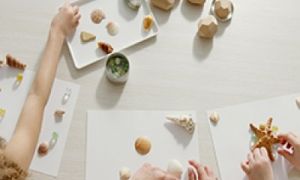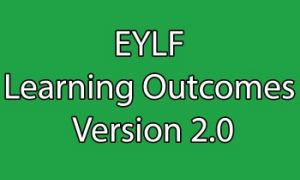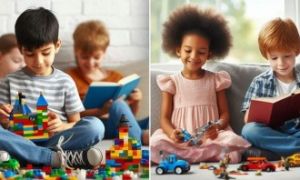

From the 2nd of April to the 13th of April is Nature Play Week. Nature Play Week is an annual event that celebrates the importance of outdoor play and connecting children with nature. The following provides activity ideas that will help you celebrate Nature Play Week at your service and can be implemented into the curriculum for children.
Emotional regulation refers to the ability to recognize, understand, and manage one's emotions in a way that is appropriate for the situation. It involves strategies and skills that help individuals control their emotional reactions, maintain balance, and respond to challenges constructively. The following article provides 30 fun and effective emotional regulation activities designed for children aged 2–4 years to help them understand and manage their feelings.
ABC Kids has created a new lullaby to support children's transition to quiet time and bedtime. This beautiful track was written and performed by Christine Anu. Piki Lullaby includes the Kalaw Kawaw Ya/Kala Lagaw Ya language from Zenadth Kes (Torres Strait). Piki Lullaby was created on the lands of the Darumbal and Gadigal people.
Prewriting patterns are fundamental shapes and strokes that help young children develop the fine motor skills and hand-eye coordination necessary for writing. They are typically introduced gradually as children develop the ability to draw basic shapes and lines. The following article provides information on Benefits Of Children Learning Prewriting Patterns, Progression Of Prewriting Patterns, What Age Do Children Usually Master These Patterns?, How Do These Patterns Relate To Future Writing Skills?, What Are Some Effective Teaching Strategies For Prewriting Patterns, What Are Alternative Teaching Strategies For Prewriting?, What Are Alternative Teaching Strategies For Prewriting? and more.
The following article lists 20 Cultural Games, Instructions For Each Game, Benefits Of Teaching Children These Games, Linking To The EYLF and more.
Group games are a wonderful way to integrate fun with essential developmental milestones for toddlers, fostering their development across various areas. The following article lists 30 Indoor Group Games For Toddlers and The Benefits Of Group Games For Toddlers.
Supporting schemas through meaningful and engaging experiences helps nurture children’s natural learning processes. The following article provides activity ideas for incorporating schema-focused activities into the learning environment.
Play-based learning and school readiness are closely connected, as this approach nurtures the skills children need to succeed in school while maintaining their natural curiosity and love of learning. The following article provides information on How Play-Based Learning Supports School Readiness, Examples of Play-Based Learning for School Readiness, How Do Children Learn Concepts Through Play Based Learning, Examples Of Learning Colours, Numbers, Shapes, Letters Through Play-Based Learning, Importance of Play-Based Learning and more.
Process art is all about focusing on the creative experience rather than the final product. The following article provides 50 Process Art Ideas, Importance Of Process Art and more.
Ensuring safe Holi colors for children is essential to protect their skin and overall health. The following article provides DIY Natural Holi Colours, Recipes for Holi Colors with Rice Flour, Fun Ways to Play with Holi Colours, Holi Safety Tips For Children and more.
 As an Educator in Australia, your pay rate falls under the Children’s Services Award 2010. This award states the minimum amount that an employer can… Read More
As an Educator in Australia, your pay rate falls under the Children’s Services Award 2010. This award states the minimum amount that an employer can… Read More
 When working as a qualified Early Childhood Teacher (with a university degree) within a service, your rate of pay will come from the Educational Services… Read More
When working as a qualified Early Childhood Teacher (with a university degree) within a service, your rate of pay will come from the Educational Services… Read More
 When working as a Diploma Qualified Educator your pay rate is from the Children's Services Award 2010. This Award states your minimum rate of pay… Read More
When working as a Diploma Qualified Educator your pay rate is from the Children's Services Award 2010. This Award states your minimum rate of pay… Read More
 When working as a Cert 3 Qualified Educator, your pay rate is from the Children's Services Award 2010. This Award states your minimum rate of… Read More
When working as a Cert 3 Qualified Educator, your pay rate is from the Children's Services Award 2010. This Award states your minimum rate of… Read More
 Educational Leaders play a crucial role in their early childhood service by ensuring that the educational program aligns with best practices and supports the holistic… Read More
Educational Leaders play a crucial role in their early childhood service by ensuring that the educational program aligns with best practices and supports the holistic… Read More
 With the new national child safety reforms kicking in on 1 September 2025, early childhood services like yours have a real opportunity to lead the… Read More
With the new national child safety reforms kicking in on 1 September 2025, early childhood services like yours have a real opportunity to lead the… Read More
 In early childhood education and care, ratios are more than a technicality—they are a frontline safeguard. Every child deserves responsive supervision, emotional connection, and developmental… Read More
In early childhood education and care, ratios are more than a technicality—they are a frontline safeguard. Every child deserves responsive supervision, emotional connection, and developmental… Read More
 Here’s a comprehensive Mobile Phone and Smart Watch Policy tailored for early childhood education and care (ECEC) services in Australia, aligned with the latest 2025… Read More
Here’s a comprehensive Mobile Phone and Smart Watch Policy tailored for early childhood education and care (ECEC) services in Australia, aligned with the latest 2025… Read More
 The Sea of Fish Challenge is a national initiative that invites children, educators, families, and communities to create and display fish artworks as a symbol… Read More
The Sea of Fish Challenge is a national initiative that invites children, educators, families, and communities to create and display fish artworks as a symbol… Read More
 Cold weather play is incredibly beneficial for early childhood development! It helps children build resilience, strengthen their immune systems, and develop essential motor skills. Here’s… Read More
Cold weather play is incredibly beneficial for early childhood development! It helps children build resilience, strengthen their immune systems, and develop essential motor skills. Here’s… Read More

Loose parts Play in outdoor areas transforms the everyday environment into a dynamic, open-ended learning...
See more...
The 5 Learning Outcomes are intended to document the complex and integrated learning and development...
See more...
The theme of this year's Children's Week is Article 24 of the United Nations Convention...
See more...© 2009-2025 Aussie Childcare Network Pty Ltd. All Rights Reserved.
